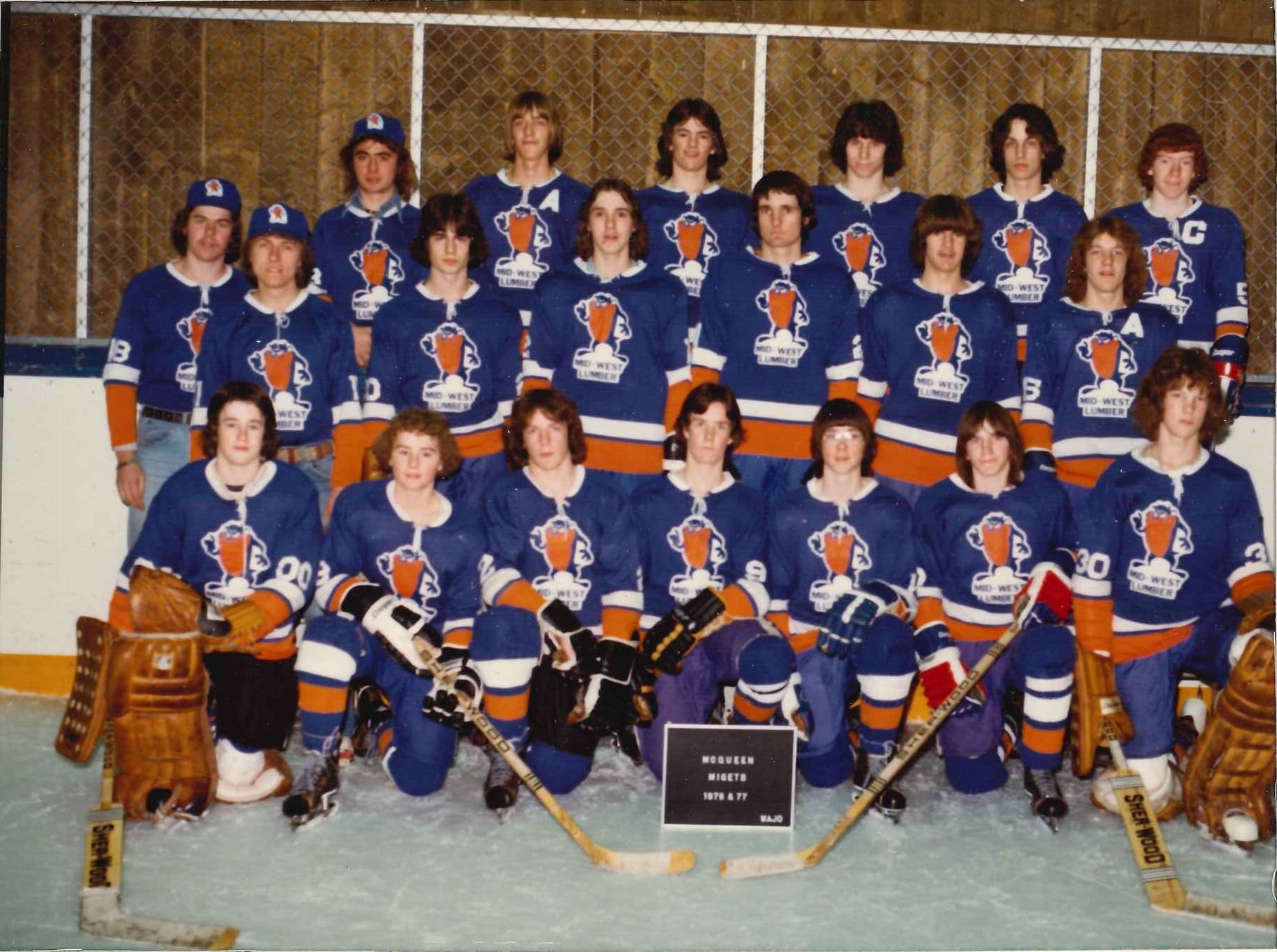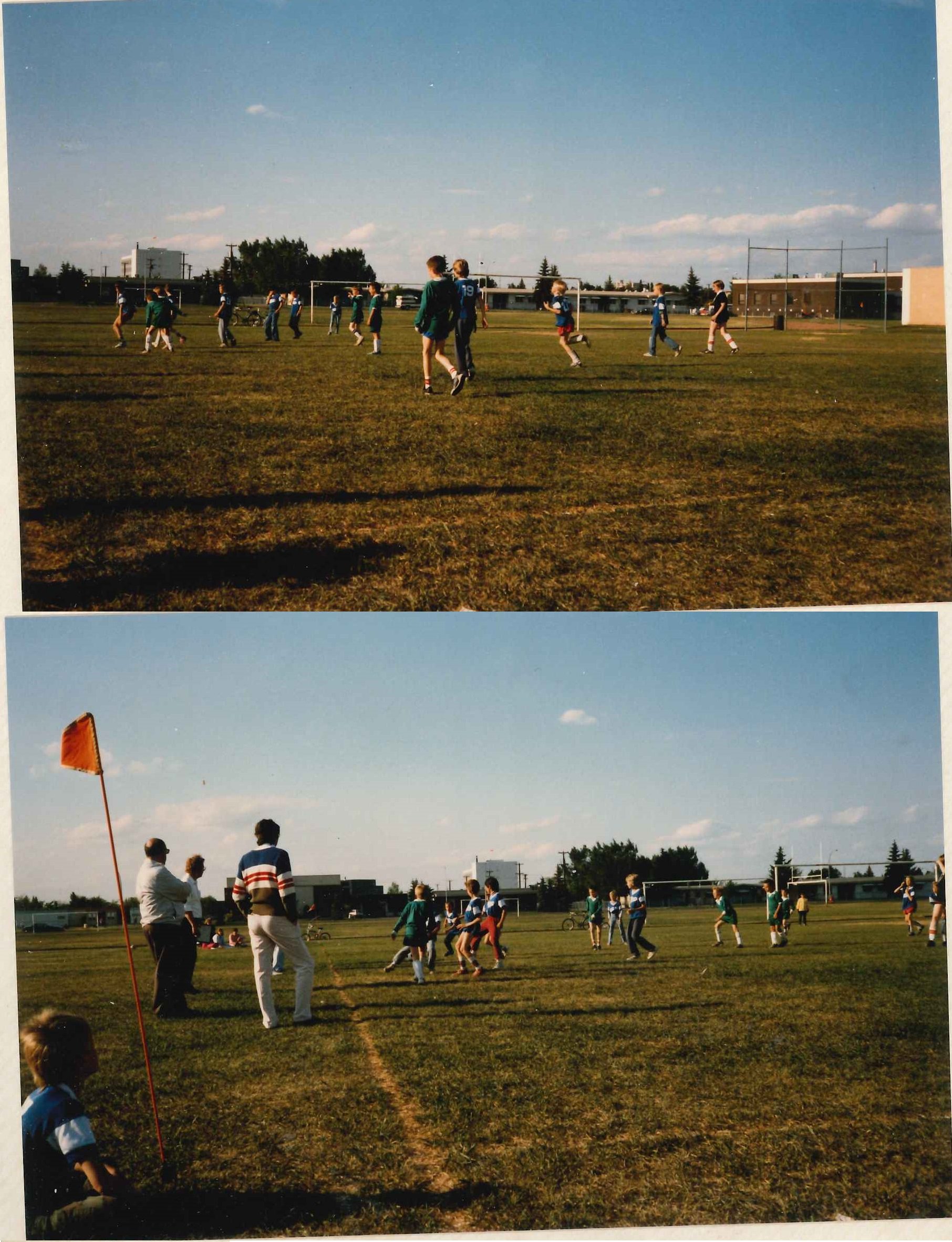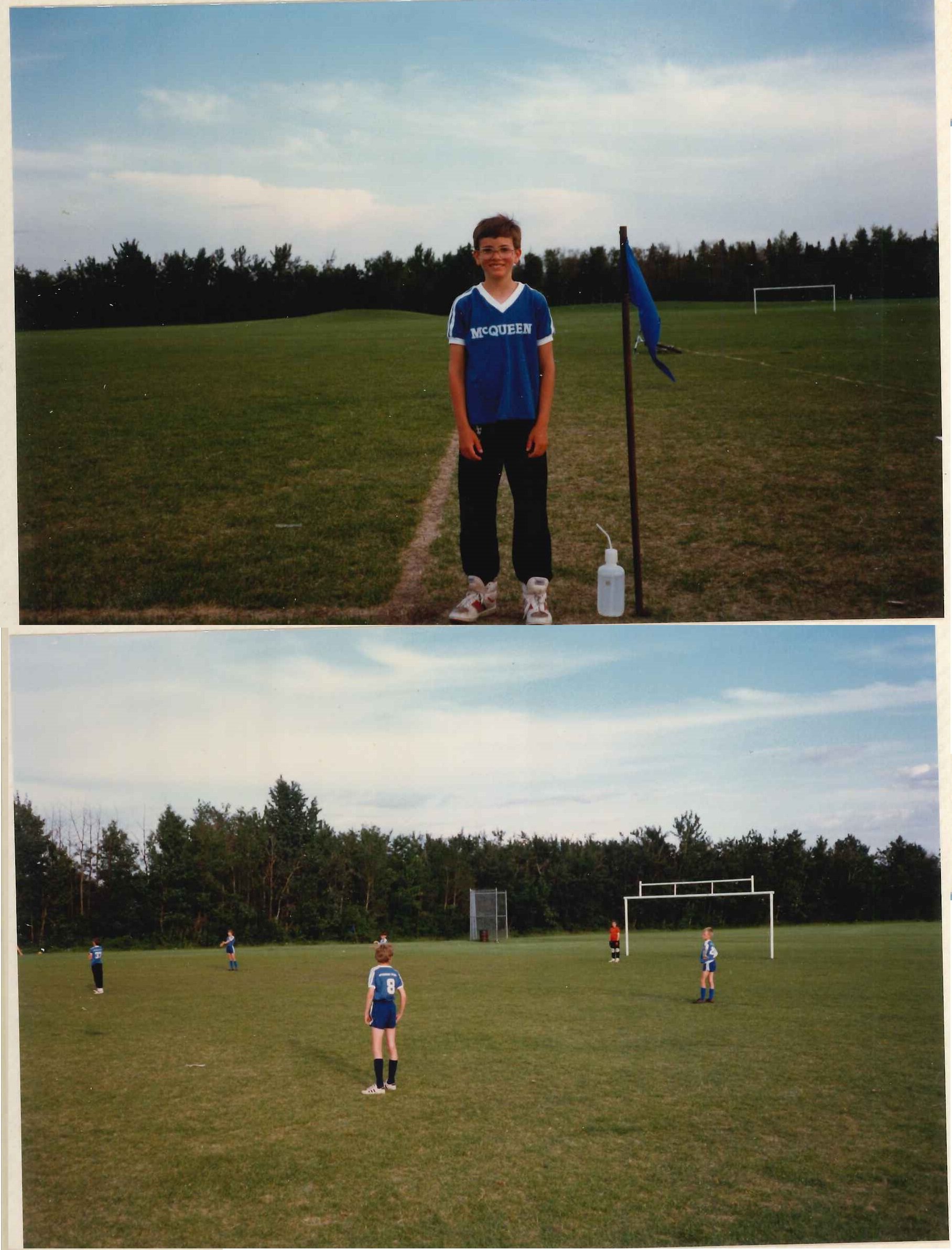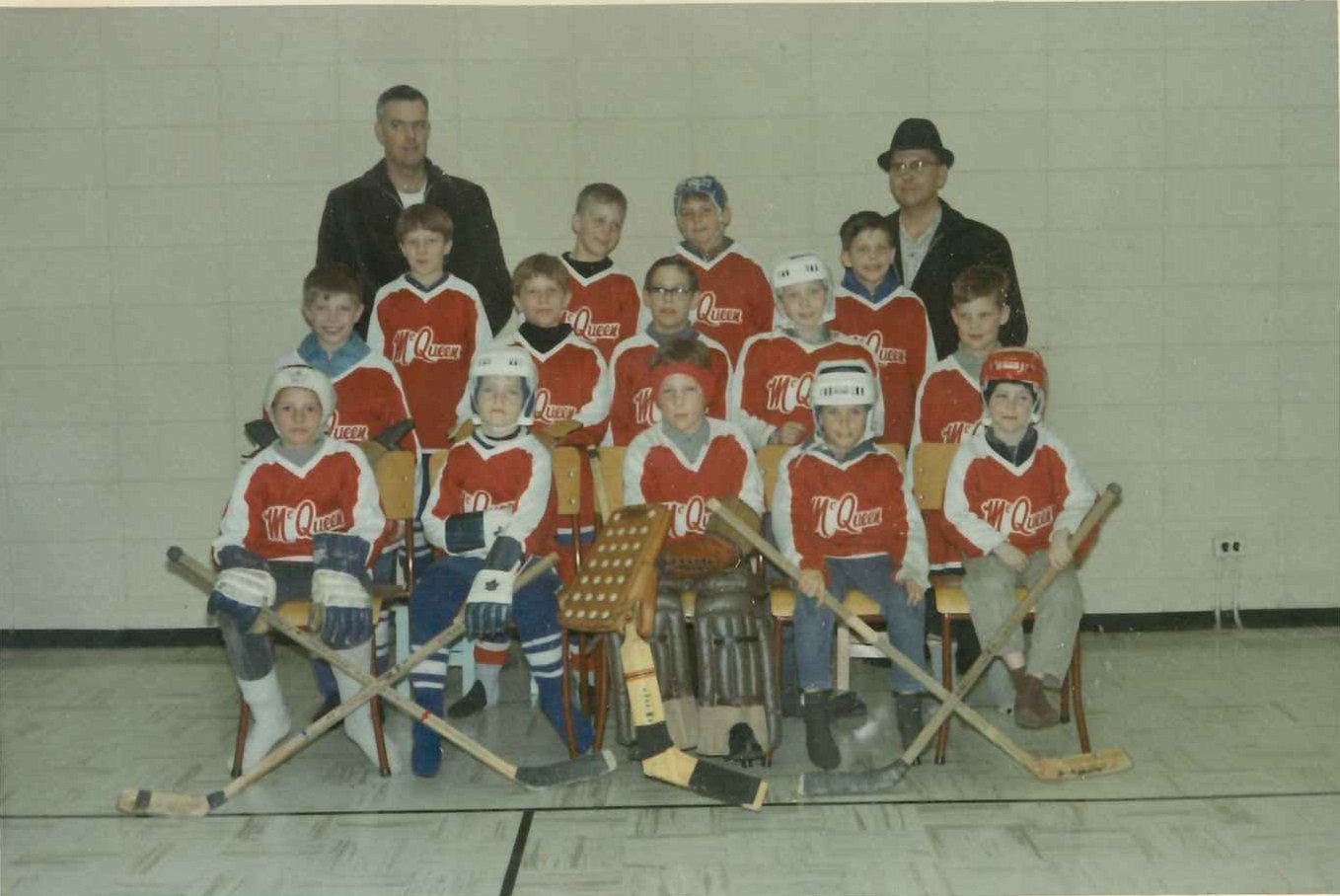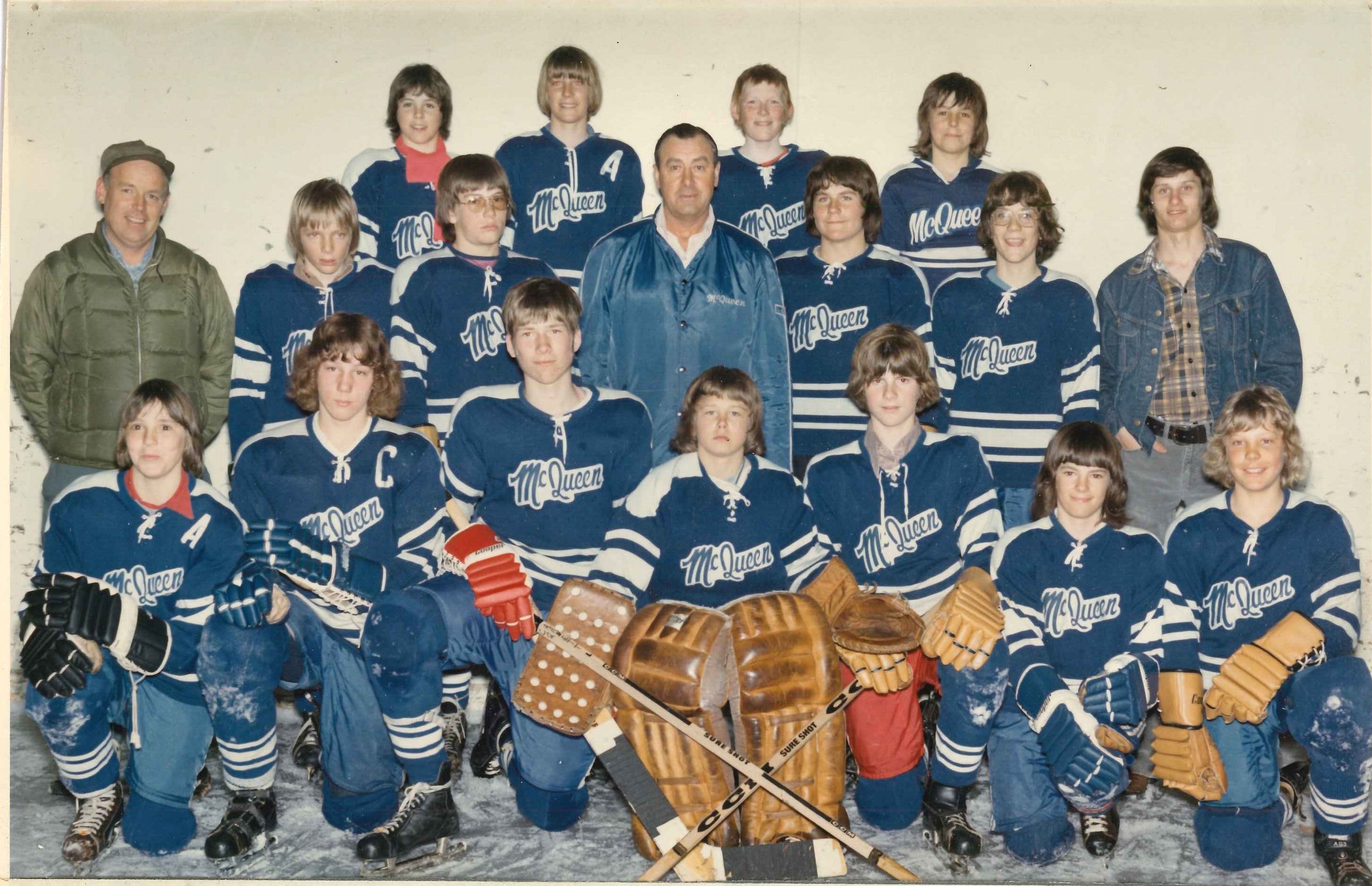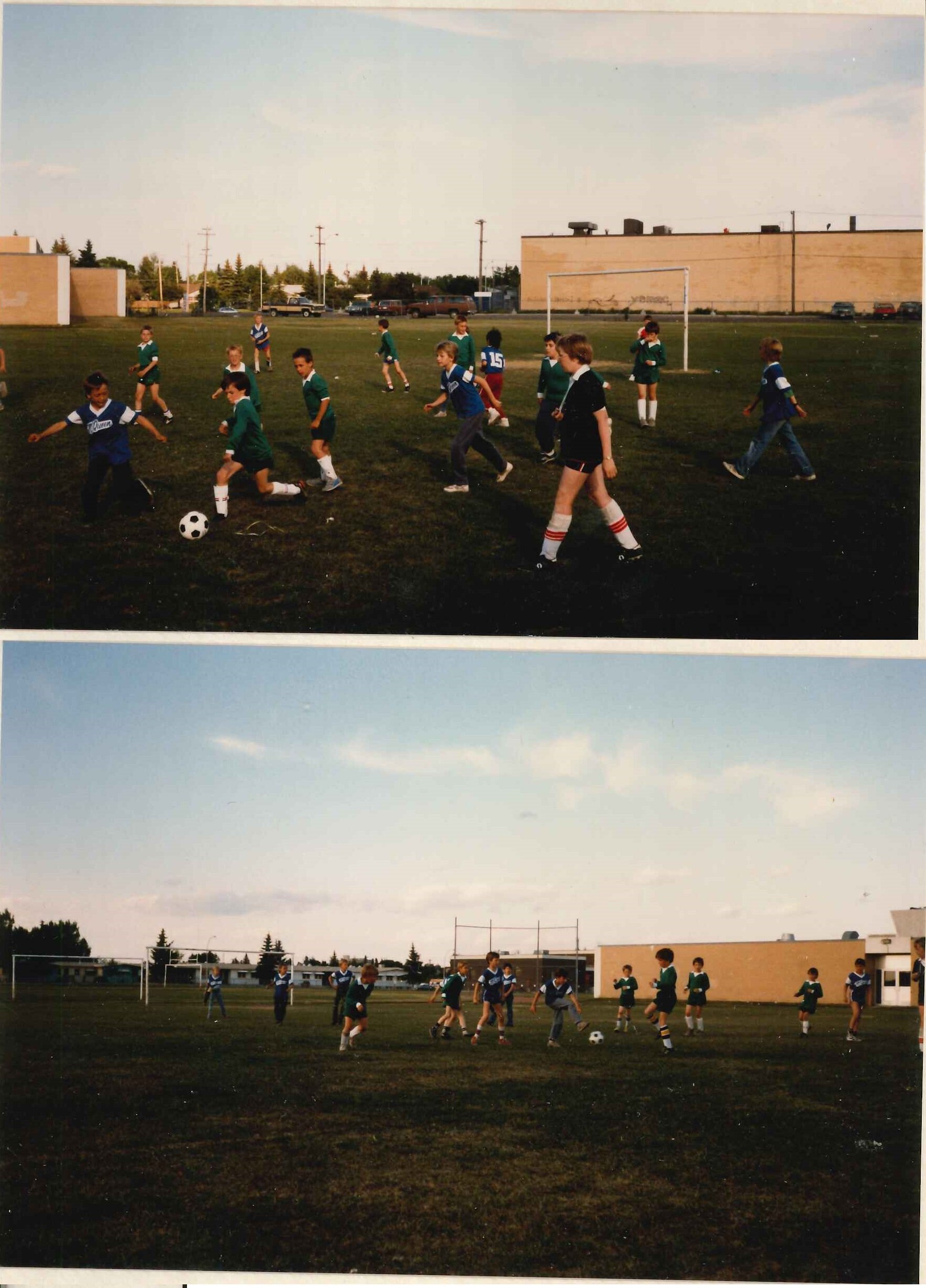McQueen's History: League founded in 1955 • First President Leo Jarron
McQueen is named after one of Edmonton’s early pioneer citizens, Reverend D.G. McQueen of the Presbyterian Church. Reverend McQueen took up his parish in 1881, at a time when Edmonton’s population was barely 350.
Coronation School was the scene of McQueen Community League’s formative meeting. As it was already November, league members quickly prepared for winter recreation by building a rink. McQueen added a second rink and a $7,000 clubhouse in 1958. Further upgrading continued for the next several years, until 1961 when the complex was christened by Mayor Roper and President Alien Welsh of the EFCL.
McQueen’s first days were filled with civic action. A 3,000 name petition was compiled - destination Edmonton City Hall. It requested the removal of the old 142nd Street railhead which was built during WW II. According to the petition, the railhead was an eyesore and a hazard to children.
The Ladies Auxiliary was the first group off the mark in the organization of social functions. Bake sales and fashion shows were held with the proceeds going toward the purchase of required items, such as a record player or set of speakers for the rink complex.
During the 1960’s, members of McQueen were kept busy. For those with creative dexterity there were millinery, dressmaking, ceramics, and basket weaving classes. For those who wished to burn off calories there were keep-fit workouts, figure skating, hockey games and tumbling for the tots. The teen club was also a going concern, providing McQueen’s first carnival queen, Clara Makowski, in 1959.
Nearly two decades later, in 1977, a new cycle of growth occurred at McQueen Community League. A $40,000 Major Cultural/Recreational Facility grant was obtained and three tennis courts were built. The following year, an additional $16,600 was acquired for a fourth court as there was a growing demand from racquet enthusiasts. A new rink was added at the same time and another was built in 1983.
McQueen had a dispute with the Alberta Teachers Association (ATA), starting in 1975. The ATA wanted to build an eight-storey addition to Bamett House at 11010-I42nd Street and it requested that the Development Appeal Board (DAB) waive in this one instance the existing bylaw on restriction of building height.
DAB agreed to the suggestion, but the McQueen Community League took exception. It noted that the existing building was already 10 metres higher than allowable and it brought a 475 name petition to the attention of DAB. President Ron Quinn explained McQueen’s objections to the Edmonton Examiner thus: “A lot of people in the community are concerned this project will set a precedent in the area and encourage other developments.
The league decided to file a legal appeal against DAB’s decision. In McQueen’s opinion, the proposed addition would create problems similar to those that accompanied residential high-rise development. General congestion, parking and traffic problems, were bound to follow in the building’s wake. From the ATA’s point of view, DAB’s decision to waive restrictions in (his one case was proper. The city had originally approved the teachers’ building plans in 1968, knowing of the future intent to expand.
A compromise was eventually reached between McQueen and the ATA. After spending over $6,000 on legal expenses, raised through donations, hall rcnlals and “cutting corners,” McQueen Community League agreed to an additional two storeys on Barnctt House and the construction of another two-storey wing. It was understood that there would be no further development for a period of 18 years.
Article courtesy of: Edmonton Federation of Community Leagues






